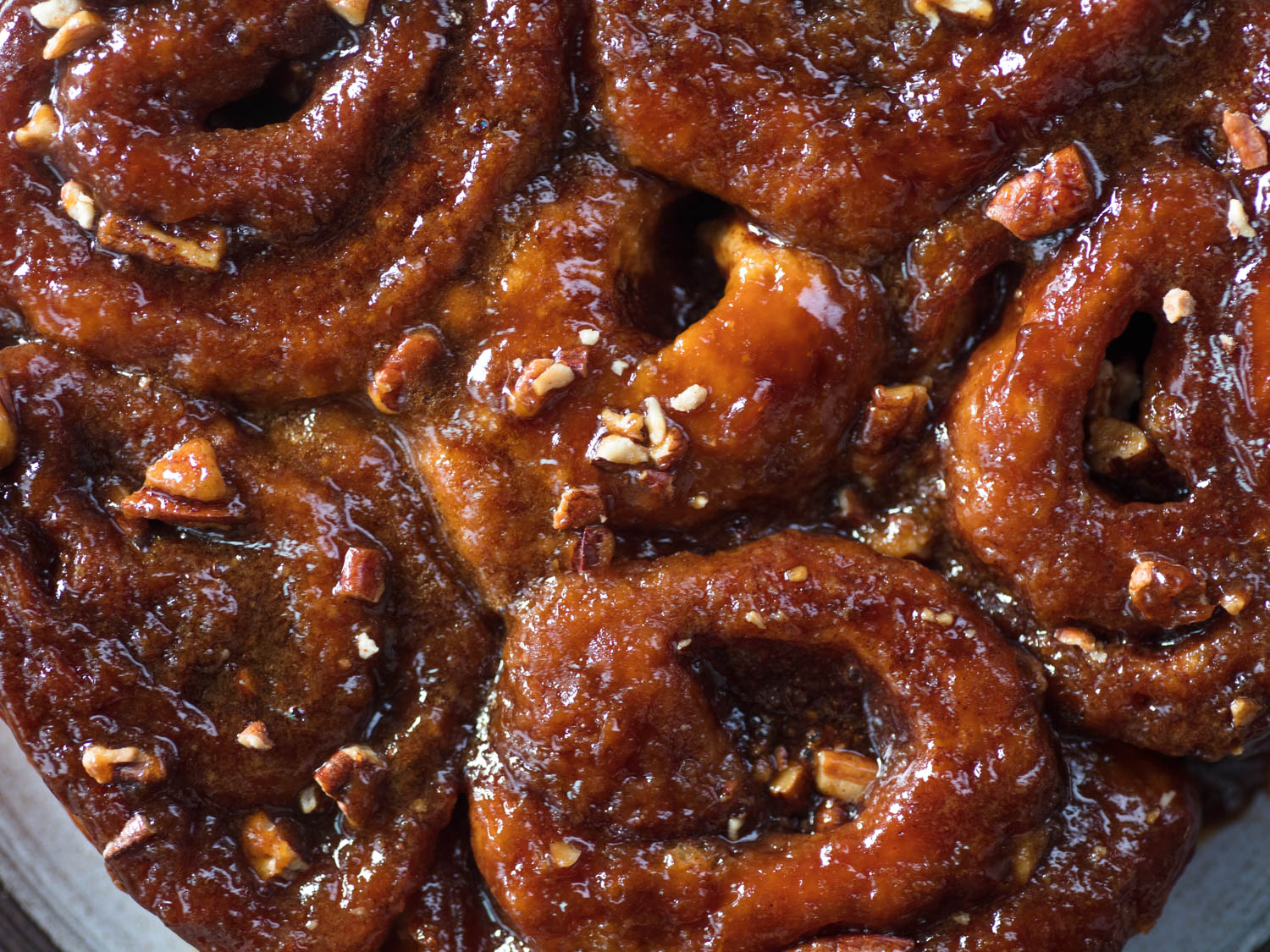
[Photographs: Vicky Wasik]
Having company for breakfast can be nerve-wracking. It usually takes some finagling to get the timing right, and there’s no room for do-overs at the crack of dawn. And when you’re a baker by trade, especially one who’s recipe testing for her first cookbook, you feel a certain pressure to live up to your guest’s expectations—especially when that guest happens to be The Food Lab creator, Kenji López-Alt.
That’s what went down four years ago, when Kenji crashed at my place during a cross-country taco crawl. Unfortunately, the only thing I had to serve for breakfast was an experimental batch of caramel sticky buns. As I pulled them from the oven, I knew I had a failure on my hands. Rather than a light saucing, the buns were so saturated with caramel that the dough itself had started caramelizing, and their bottoms had the sort of squishy richness I associate with pan pizza.
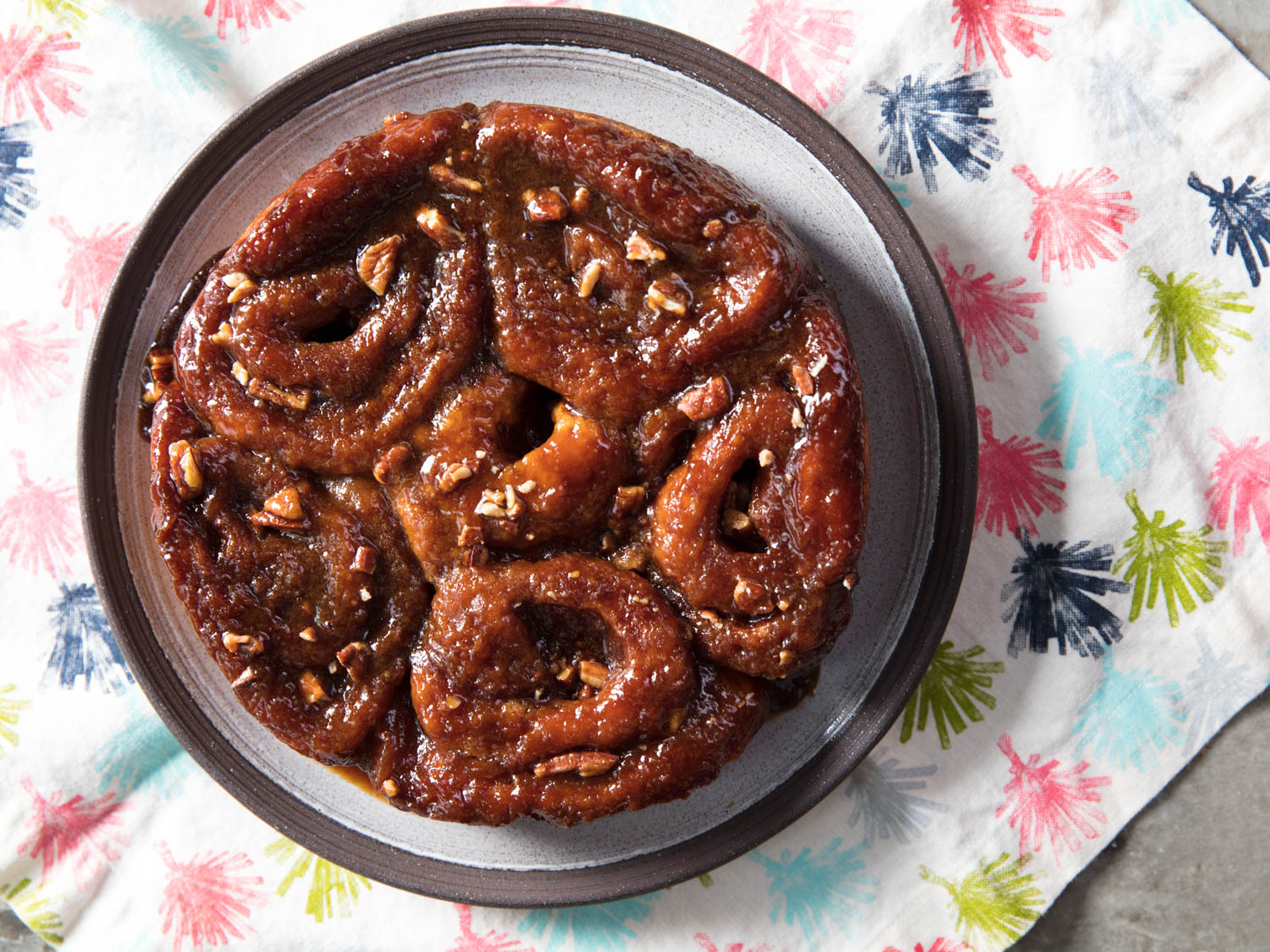
As I panicked over my failure, Kenji just waltzed into the kitchen in his pjs, raided the fridge, availed himself of a cast iron skillet, and whipped up a new recipe on the spot: a deliciously savory sweet potato hash with baked eggs. I cracked a joke about the perils of recipe testing, shoved the sticky buns off to one side, and hoped that Kenji would ignore them in favor of his clearly amazing contribution to breakfast.
When he recounted the meal on Serious Eats a few days later, I assumed he filtered the story through a lens of kindness, unwilling to critique my candied sticky buns in public.
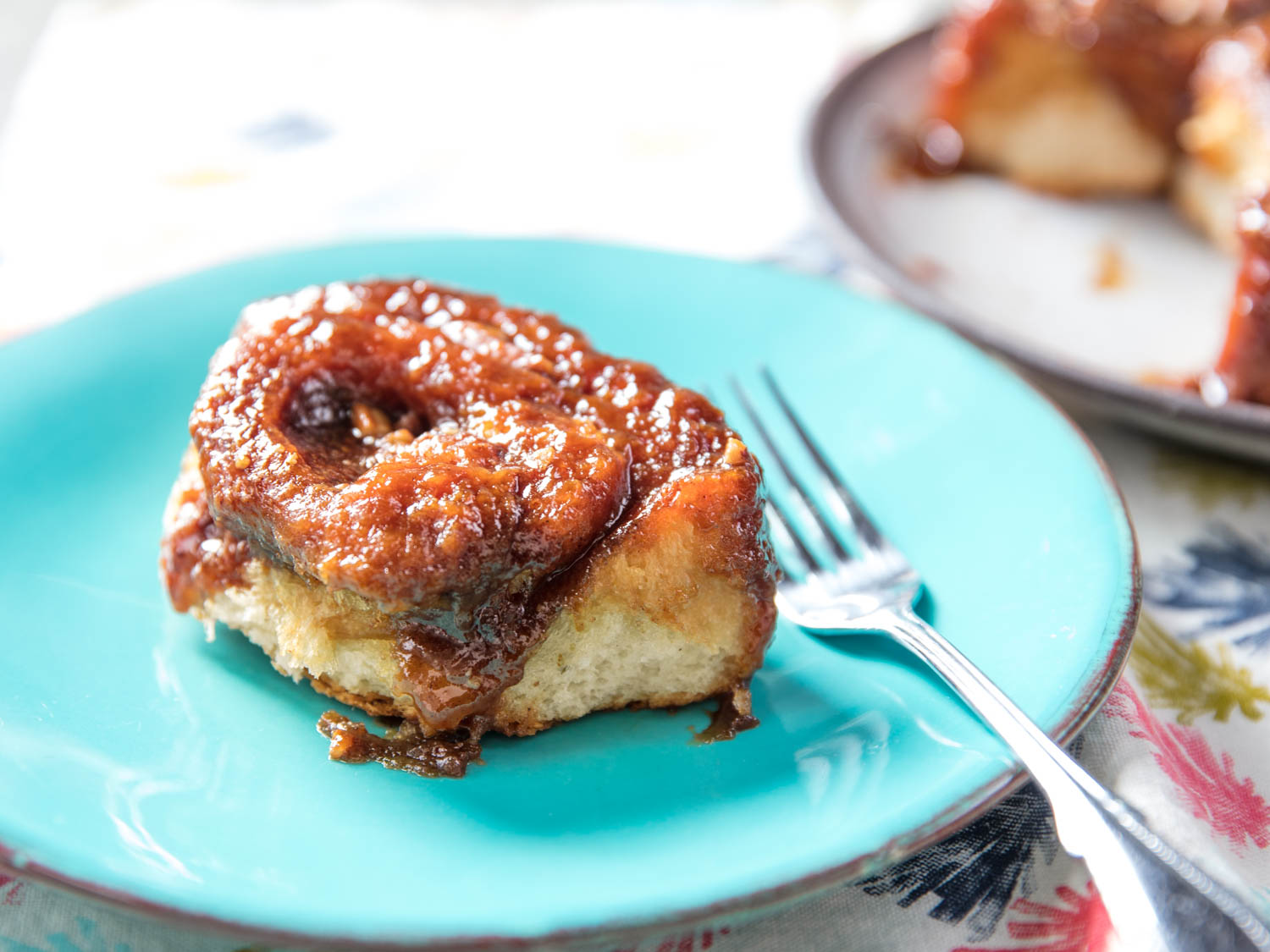
I packed the memory of those caramel buns into a dark corner of my mind and forgot about them entirely until Kenji recently mentioned them on Twitter. It was immediately clear that we had two very different recollections of how things went down, with Kenji managing to convince everyone they’d been great. Great?
The exchange left me to wonder whether I’d been too anxious and self-critical to appreciate that, while they weren’t the super traditional sticky buns I’d been aiming for, perhaps they had a charm of their own.
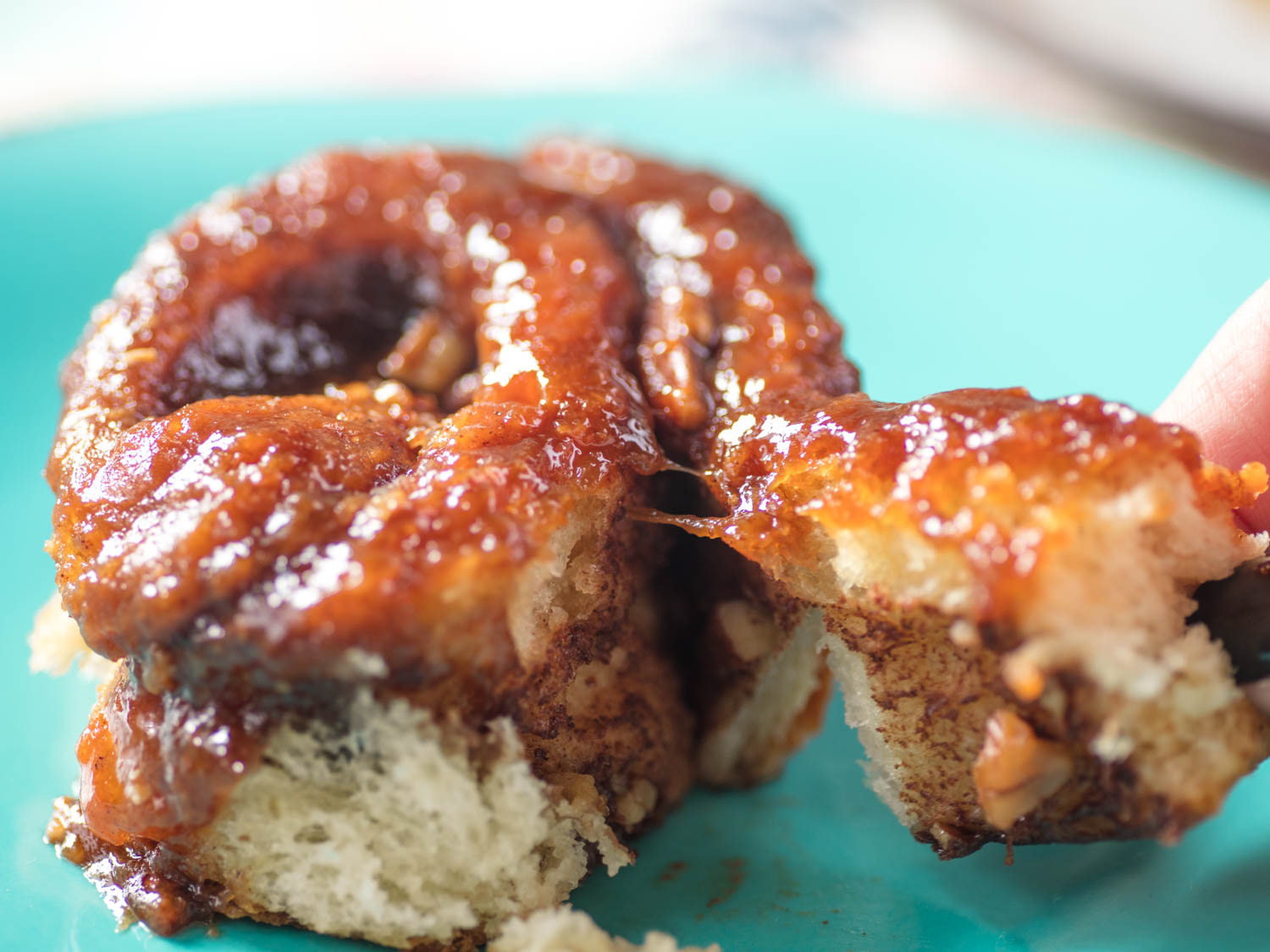
So I dug out my notes and set out to recreate the recipe—with a few crucial changes. The day Kenji came over, caramel sauce had bubbled from the pan to pool (and burn) on my oven floor, and the buns themselves were large enough to feed a Wookie. A single bun left me in a caramelized carb coma about halfway through, with a huge mess in my oven to clean up. I’ve since adjusted the recipe for smaller buns and a little less sauce.
Otherwise, it’s a reasonably straightforward variation of my classic cinnamon rolls. The dough and filling is virtually identical, except toasted sugar or Belgian cassonade* are used in place of the white and brown sugar in the cinnamon roll recipe. The choice between the two sugars won’t make a difference in flavor—it’s strictly a matter of whether or not you want to order a specialty product for delivery or spend four to six hours toasting sugar at home. In either case, those sugars layer caramel flavor into the dough itself, and trade the tangy, molasses-centric flavor of brown sugar in the filling for the toasty, bittersweet depth of caramel.
*Belgian cassonade (also called candi sugar) is made from white sugar mixed with caramel, so it tastes like toasted sugar, unlike American brown sugar. Look for it wherever home-brew supplies are sold, or from companies like Brewers Best online.
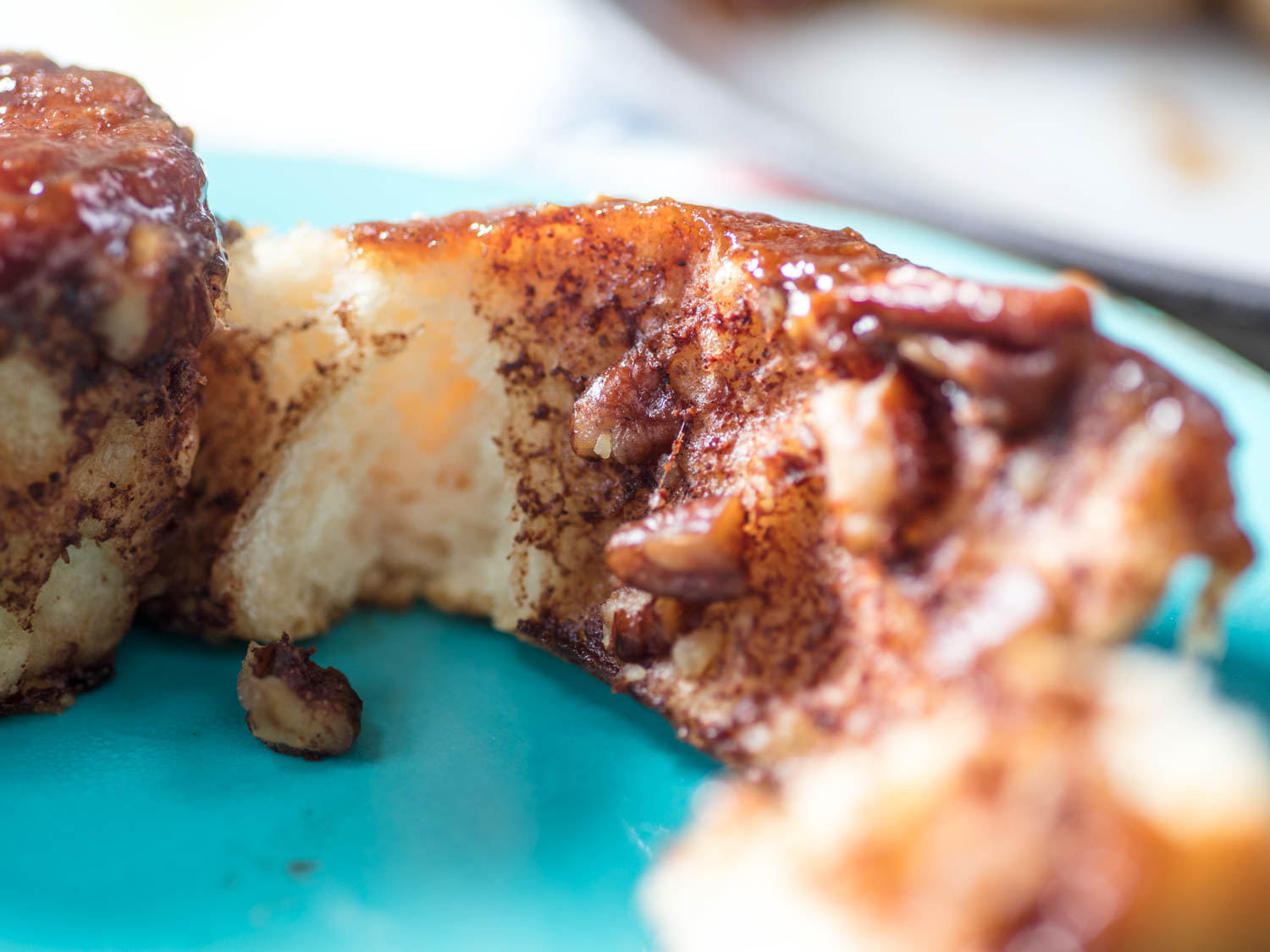
What truly sets this recipe apart is the sticky caramel topping. Where cinnamon rolls are baked and served plain or with frosting, sticky buns get their name from the self-saucing pool of butter and brown sugar they’re baked in. My recipe switches things up by baking those sticky buns in a pan of cream and cassonade or toasted sugar. The cream provides more water and lactose than butter, helping the caramel-sugar dissolve into a richer, silkier, more flavorful sauce. If you ever make a batch of Sohla’s toasted cream, it’s a fantastic upgrade for the buns.
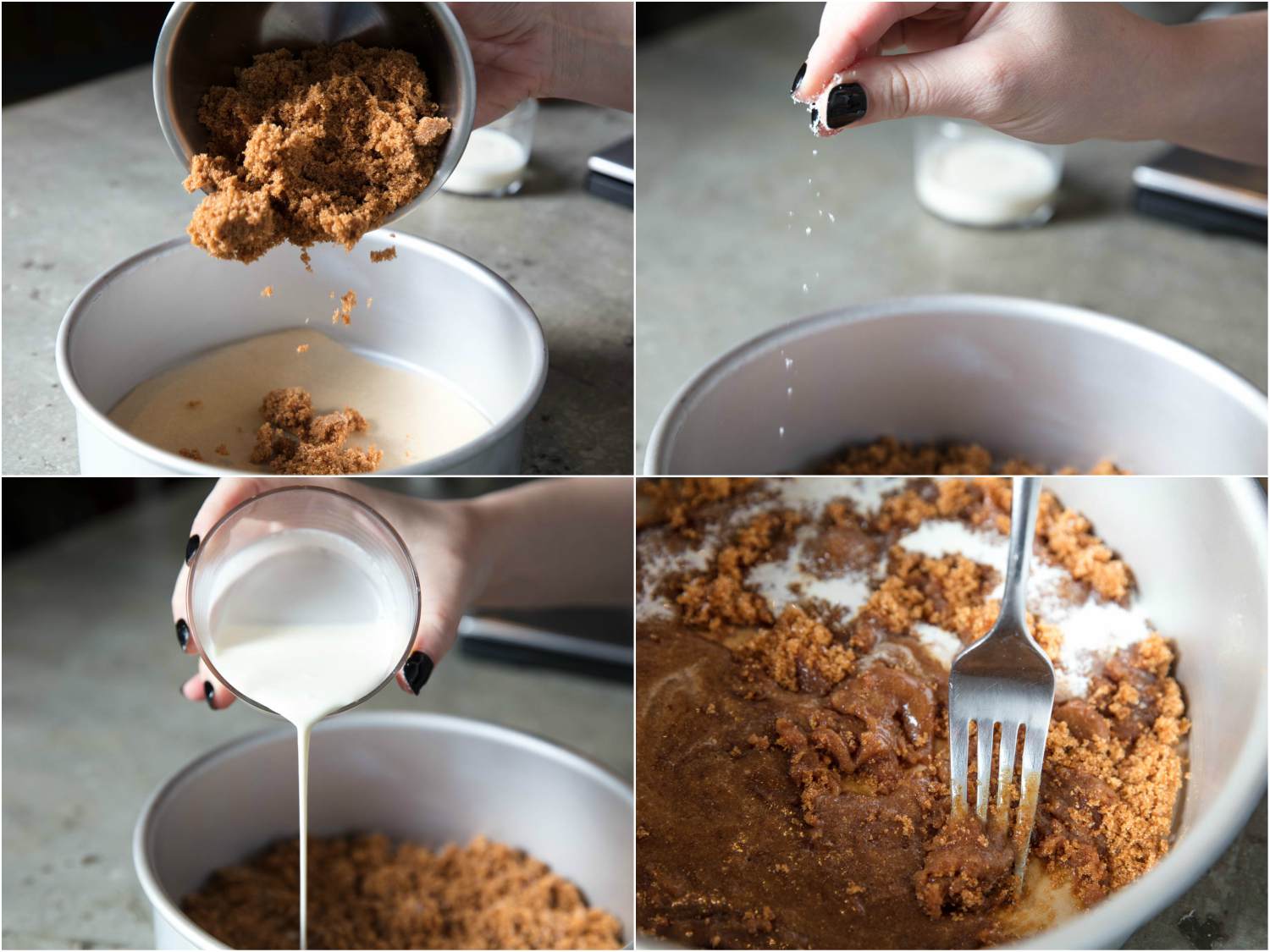
I mix the caramel topping together straight in the baking pan, no stovetop cooking or extra equipment required.
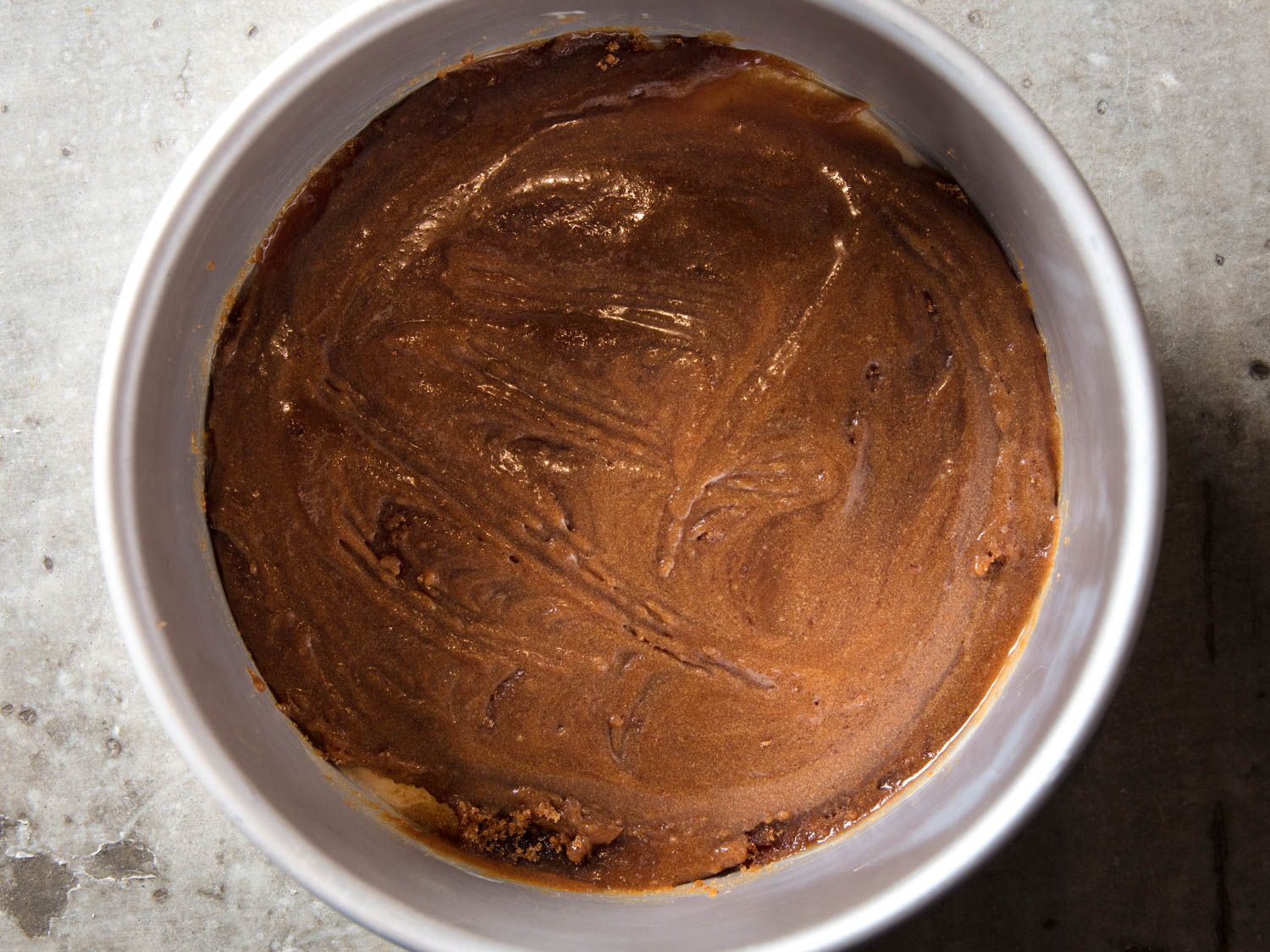
From there, the recipe carries on much like a classic cinnamon roll: I arrange the filled, shaped, and sliced buns on top of the prepared sauce.
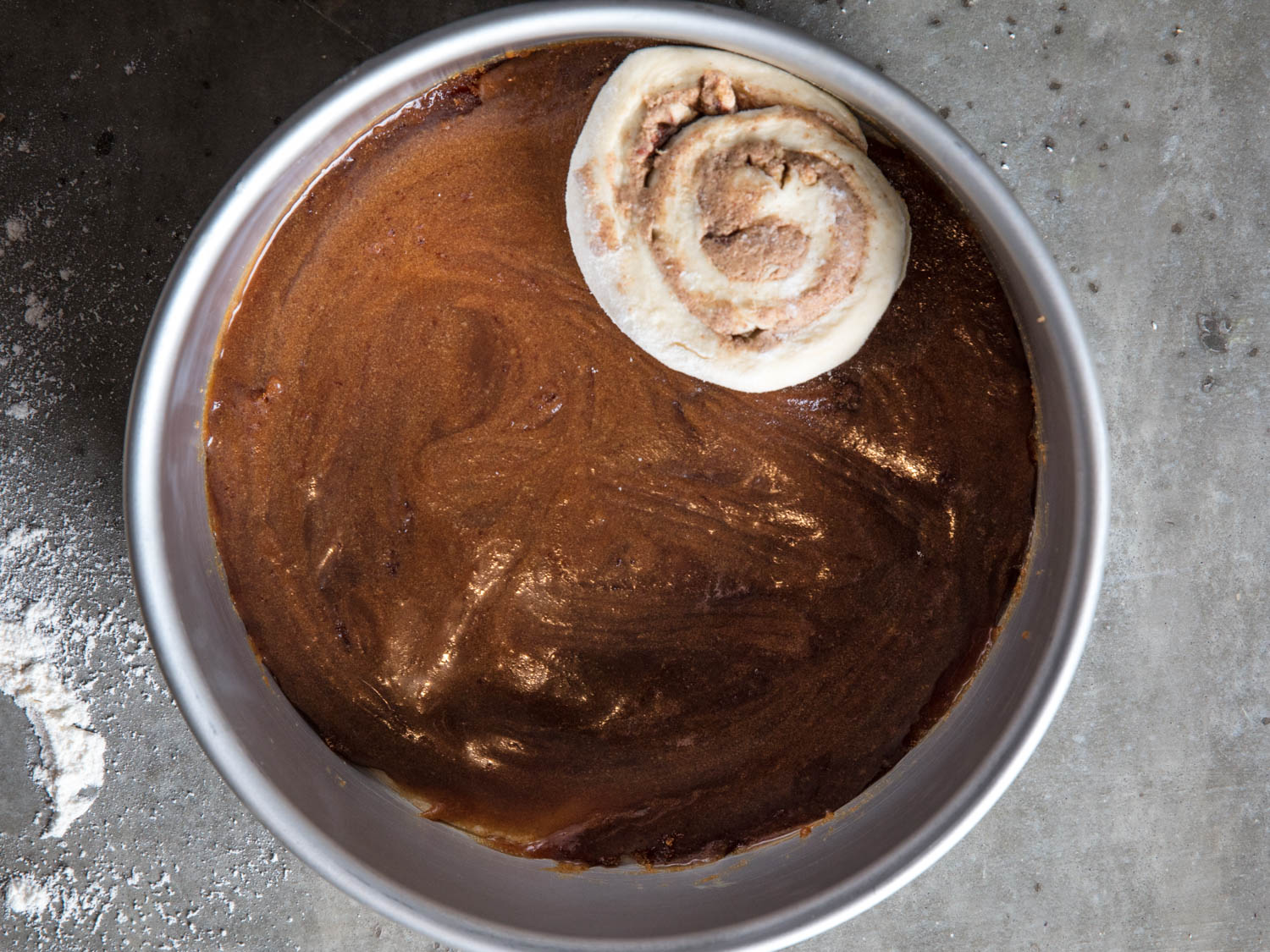
Whether you opt for a single nine- by 13-inch aluminum pan or a pair of eight-inch aluminum rounds, it’s a reasonably snug fit, which keeps the buns nice and thick.
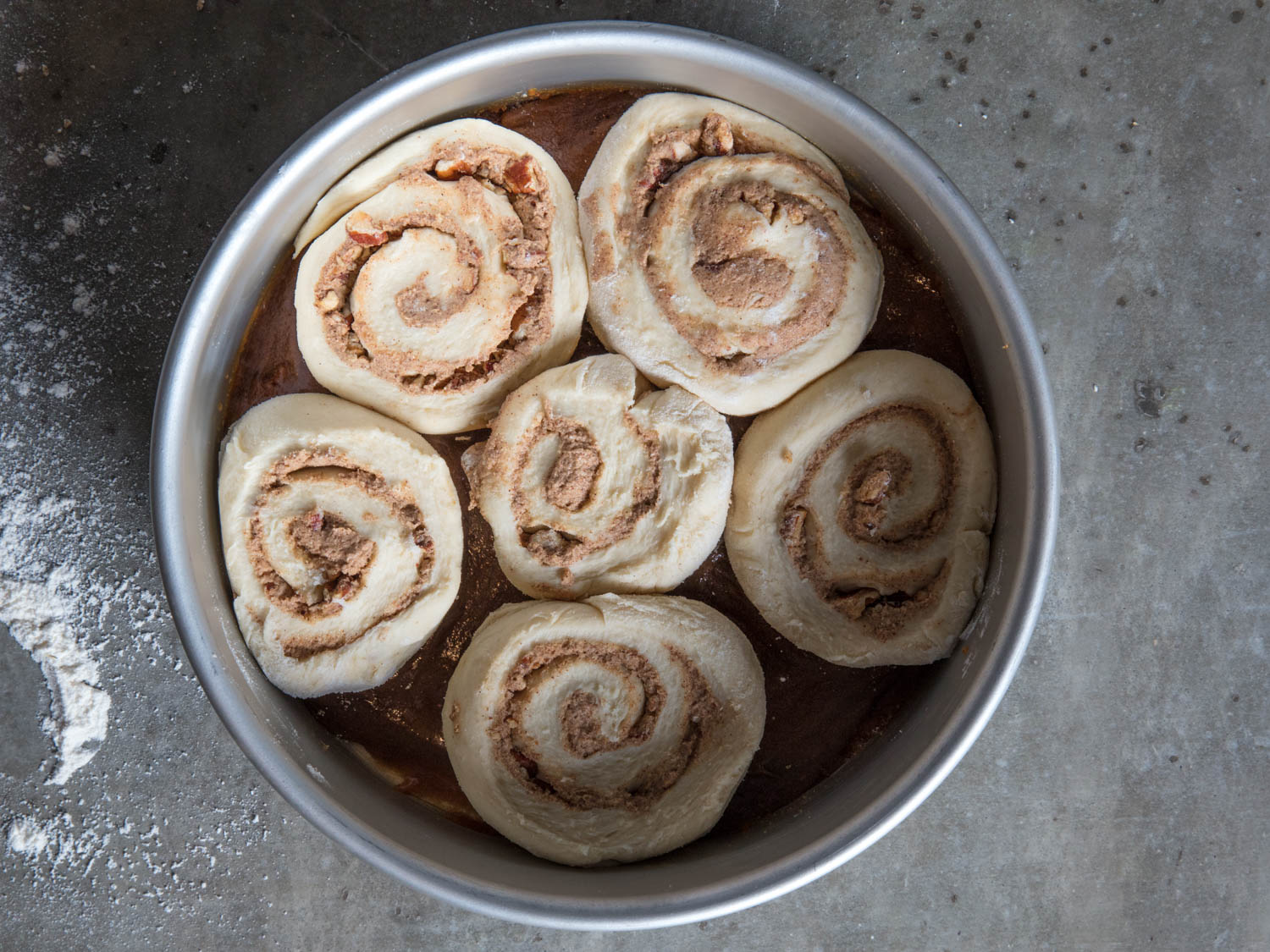
The final step is to cover the pan(s) with aluminum foil and refrigerate overnight. This long, slow proof ensures that the buns will be flavorful and ready to bake first thing in the morning. I leave the foil in place for most of their time in the oven in order to prevent the cold dough from drying out as it warms and bakes; when the buns are almost ready, I pull the foil off so they can continue browning on top. Er….on the bottom? Like an upside-down cake, the top of the buns will become the bottom when the pan is inverted, putting that gooey layer of caramel on top.
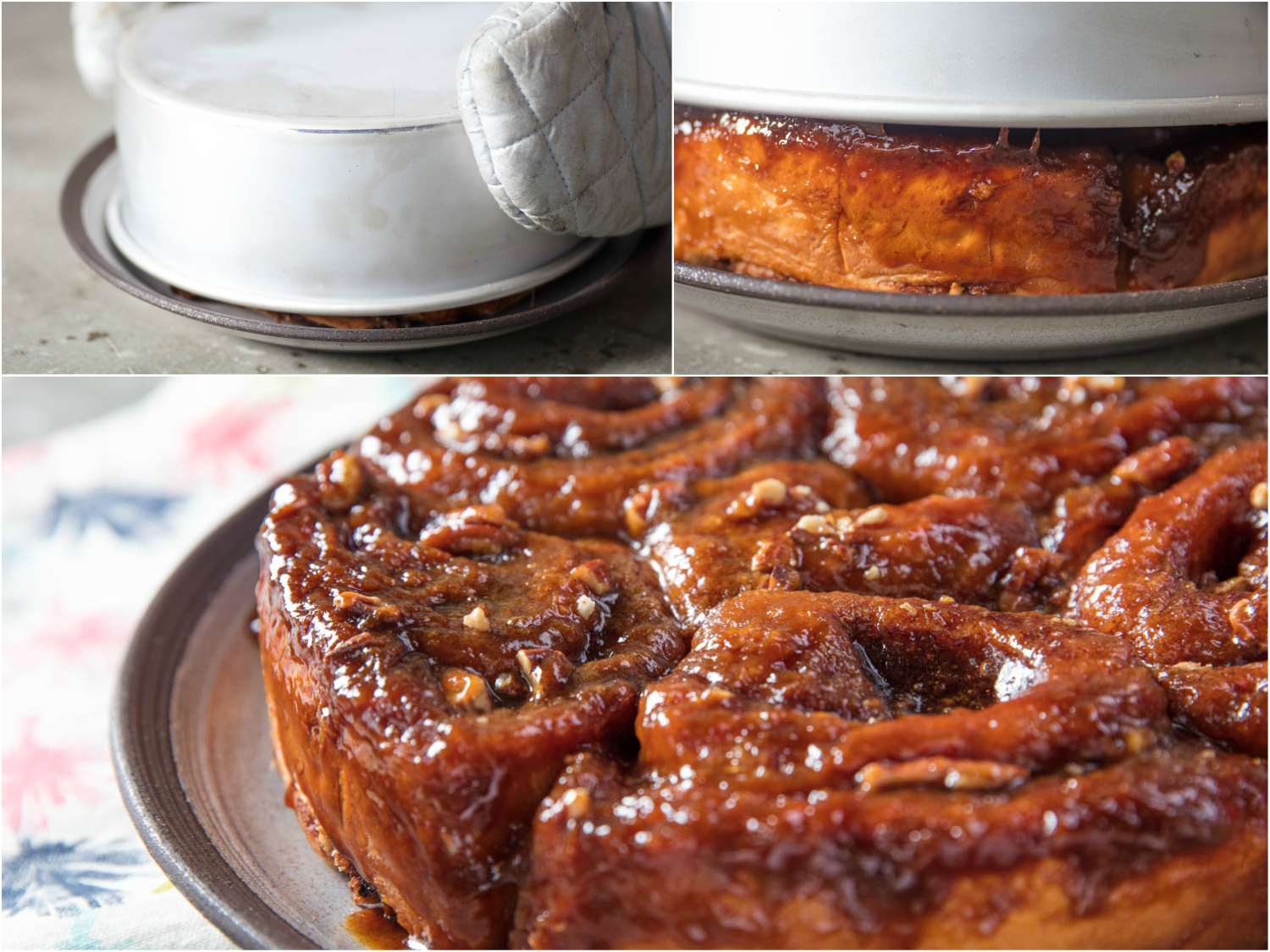
As the sticky buns bake, the toasted sugar/cream layer will continue to bubble and brown, deepening the caramel flavor along the way. If you prefer a lighter caramel flavor, simply use a lighter shade of toasted sugar to start.
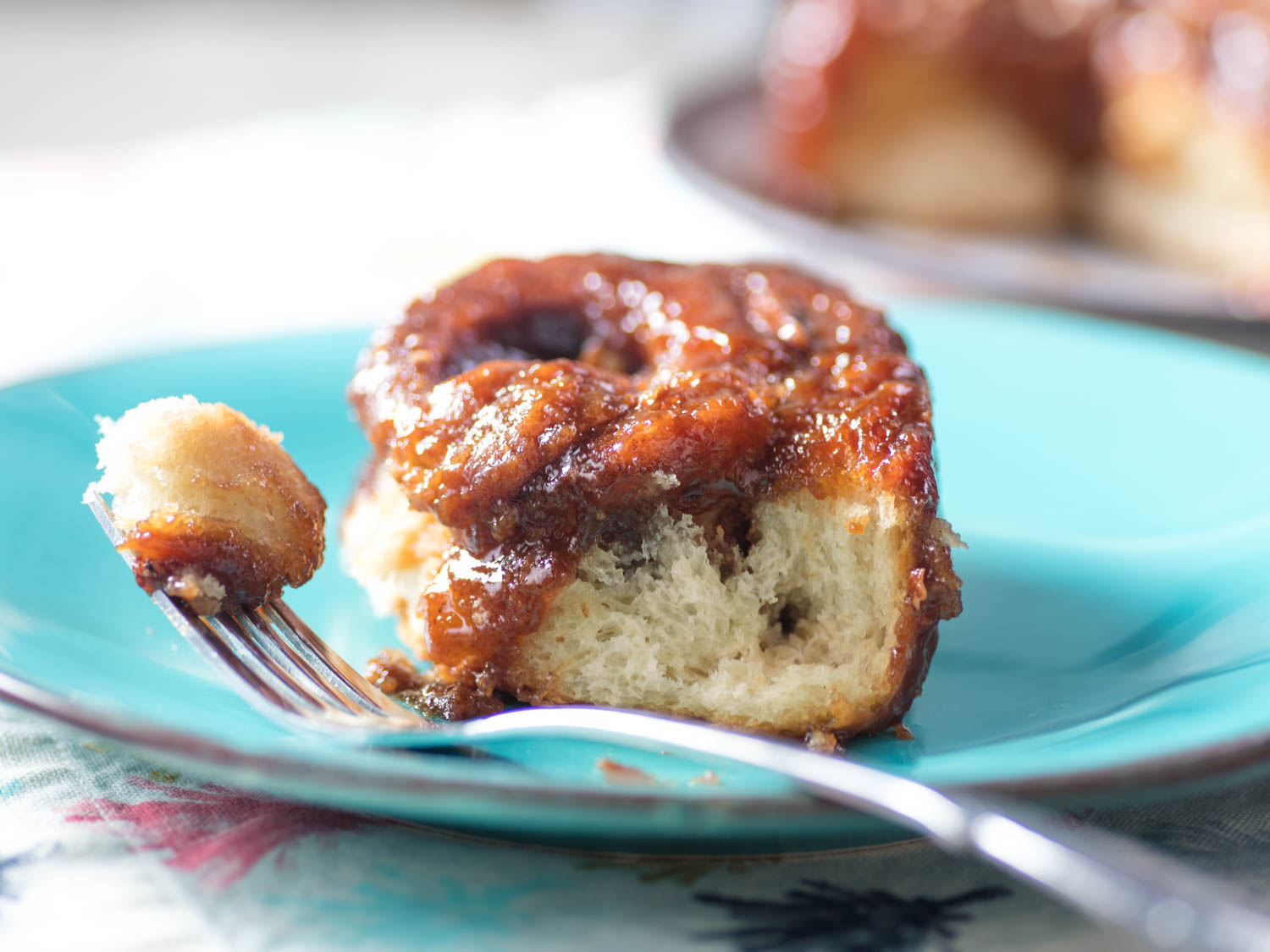
The finished product isn’t like any sticky bun you’ve had before, but I’ve come to accept that that isn’t a bad thing. Caramel gives these sticky buns a mellow sweetness and complexity that’s really lovely, and soaks into the dough so the buns bake up rich and tender, too. Perhaps something worthy of serving to company after all.
Source link